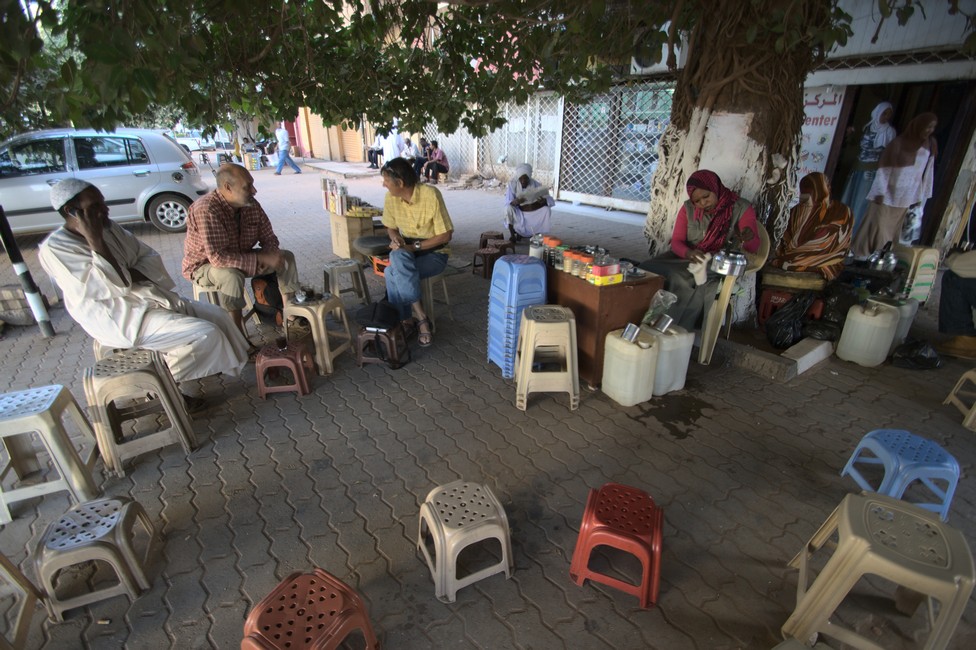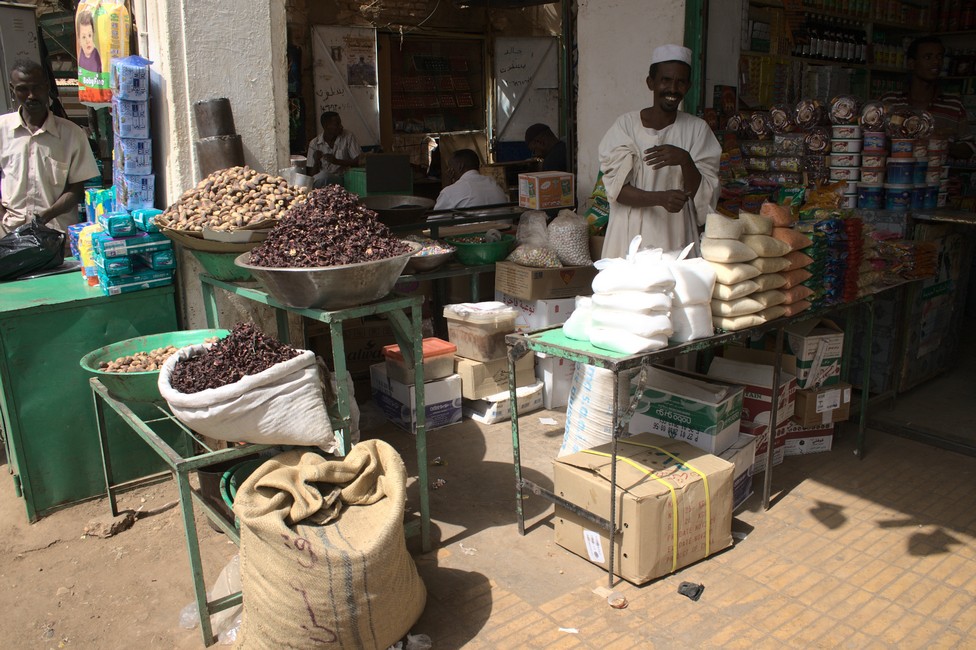With Hassan, we visit Khartoum sights and first drive to Omdurman to the Tomb of the Mahdi.

Just five months after his victory over Khartoum, the Mahdi died after a brief illness in 1885. The tomb with a silver dome was built to honor him. It became a real pilgrimage for all Sudanese, which replaces the pilgrimage to Mecca. After the British had recaptured Khartoum, they blew up the monument in the air to destroy the pilgrimage. The nephew of General Gordon did the job, and scattered the ashes of the Mahdi in the Nile. Lord Kitchener wanted the head of the Mahdi as a pencil stand, however, took distance from this, now the head is buried in Wadi Halfa. An exact replica of the tomb was built in 1947 again.
The tomb can be entered by non-Muslims, but women must cover their hair.

Hassan drives us to the souk of Omdurman. He is waiting in the taxi. The souk is the largest in the Sudan. The main section consists of many narrow streets with shops and stalls. The buildings are very old, but the sounds, the smell and the different dialects make up the charm of the souks.
We stroll relaxed through the streets, as Khartoum is regarded as the safest capital in Africa. The people are very friendly here, they of course want to sell something.

On a corner shoes are offered ,at a different corner spices. All this is available in the souk. There are not only crowds of people in the bazaar, but also traffic jam. Motor rickshaws fight with cars to the right of way. A really lively mess.
With Hassan’s taxi we torture ourselves out through heavy traffic to the periphery, where there should be a camel market.
The traffic is unusual by Western standards and we are glad that we have left our car in the Blue Nile Sailing Club, our camping site.
The camel market does not meet our expectations. It is said to be the largest in Sudan, but we see only a handful of animals. The province of Darfur is the center of camel breeding in the Sudan and most of the animals that are offered for sale, comes from this region. Most camels are destined for the Egyptian market as meat suppliers, a small portion is delivered to the Gulf states as racing camels.

We talk to a group of traders. Hassan translates. Of course, we are an attraction here when do Europeans come to the camel market. Our women are naturally admired. Timid, cautious approach to a foreign culture. Proudly they show us the animals. Normally you have to pay the bride price for marriage in camels. But we do not get an offer. We do not know whether these animals have already been sold, or whether a buyer is sought.
The camels like the fresh green grass. We take photos and they want money, for food of course. We make a donation and leave.